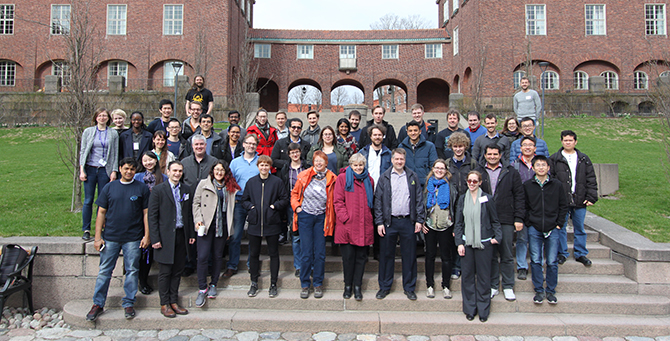PRACE/BioExcel Spring School 2017
"HPC for Life Sciences"
Michaela Barth, PDC


Together PRACE and the BioExcel Centre of Excellence were organizing a joint Spring School on the topic of “HPC for Life Sciences”. The school was to be held from the 10th-13th of April at the KTH Royal Institute of Technology main campus in Stockholm and was also being supported by the Swedish National Infrastructure for Computing (SNIC). The start of the school was unexpectedly dramatic though!
It was Friday afternoon before the Easter vacation weekend and all the preparations for the school that we had been planning for over a year had finally been completed, and I had just sent an email wishing “safe travelling” to our speakers and students when – suddenly – news of an apparent terrorist attack in central Stockholm hit the PDC office.
It felt as thought the world stopped for a moment there. There was no longer any point in fiddling around with the layout of my welcome presentation. The whole city of Stockholm had entered crisis mode – text messages started arriving from the embassy of my home country and from our children's day care centre. Obviously my embassy was not the only one to react. While watching the unfathomable news later on TV, I saw the first emails coming in from the students from Greece and Italy who had been going to attend the school saying that their embassies strongly advised against travelling to Stockholm and that they would therefore not be able to attend the school.
The PRACE Spring School had been fully booked. That was quite understandable with such a prestigious event which was offering – for the first time – the unique opportunity to learn directly from the main developers of four of the major and most popular codes for molecular modelling and simulations: VMD, GROMACS, NAMD and AMBER. When applying to hold such a seasonal school, we had promised PRACE to organize an event for 60 students and had set our own limit to an absolute maximum of 65 students. (Our limit was actually determined by the ventilation capacity in the computer lab rooms where the students, speakers and tutors would be.) We had extended the registration deadline by one week after the decision about awards of travel grants from BioExcel so that other people could apply and take the places of the students who unfortunately could not attend the school as they had not received one of the travel grants. Even though the event, as a sponsored PRACE seasonal school, was free of charge, the students still needed to pay for their own travel and accommodation. The popularity of the school was such that the students who applied were based at universities and organizations in 19 different countries – including China, the Czech Republic, India, the Russian Federation, Slovakia and Saudi Arabia – which meant significant (and sometimes prohibitive) travel costs for some of the attendees. BioExcel offered three travel grants that were awarded to students from Spain, Ukraine and Poland. Many of the “Swedish” students (that is, those with their home university or organization in Sweden) were originally from other countries as well, which also contributed to the international flavour of the Spring School.
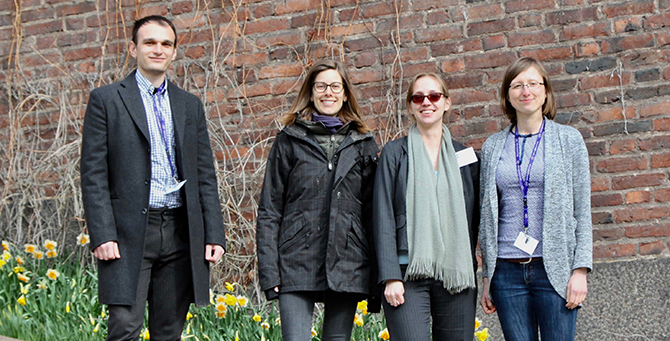
My BioExcel counterparts – BioExcel Project Manager, Rossen Apostolov, and the BioExcel Training Coordinator, Vera Matser – had put together an excellent programme focusing on extensive hands-on sessions. The main speakers that were expected at the school were Prof. Thomas Cheatham (University Information Technology, The University of Utah) – the main developer of AMBER, Dr. Jim Phillips (University of Illinois at Urbana-Champaign) – the main developer of NAMD, Prof. Erik Lindahl (Stockholm University) – the main developer of GROMACS (and also the chair of the PRACE Scientific Steering Committee), and John Stone (University of Illinois at Urbana-Champaign) – the main developer of VMD.
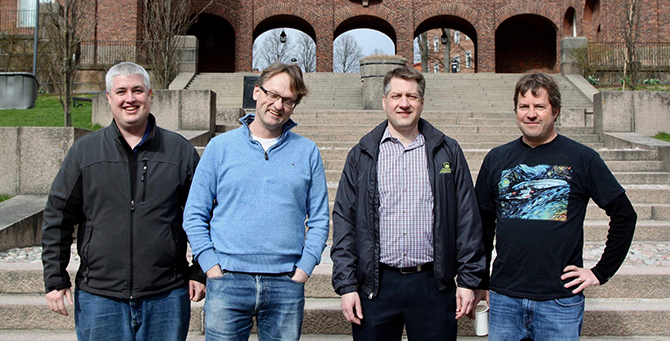
So, in a fraught weekend before the school was due to start, contingency plans and web streaming alternatives were discussed, but it became clear relatively quickly that all the speakers would come despite the situation. The “capital of Scandinavia”, as Stockholm likes to style itself, chose to approach the recent events quite matter-of-factly. Problems were solved as they appeared, people helped each other, a memorial vigil called the “Love manifestation” was organized during the weekend following the attack, and the subway and commuter trains were rolling again soon.
Finally Monday, the first day of the school, arrived and thankfully everything seemed to work smoothly: 55 students had arrived to attend what was the last of six seasonal schools within PRACE-4IP, but then, in the afternoon during the hands-on session, we unfortunately encountered some unforeseen login problems for those relying on locally provided workstations, which prevented a smooth start to the school. Fortunately, these problems were fixed fairly quickly and the school continued smoothly with the students submitting jobs to our PRACE Tier-1 system, Beskow, which is still the largest Tier-1 system within the Nordic countries.
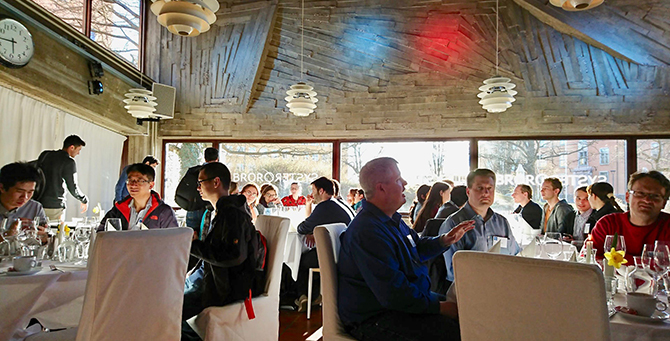
According to the later feedback reports, the students felt they had received helpful support and that PDC had acted professionally in solving the problem. Despite the unforeseen hassles, overall more than 75% of the students gave the spring school a good or excellent rating in the feedback form. The balance of theoretical and practical content of the classes was also given a very good rating, the overall workshop organization was rated favourably, and especially the food (including the welcome dinner at the “Syster O Bror” restaurant and the visit to the Vasa Museum and its restaurant) received many, many positive remarks and a 60% excellent rating in the feedback form.
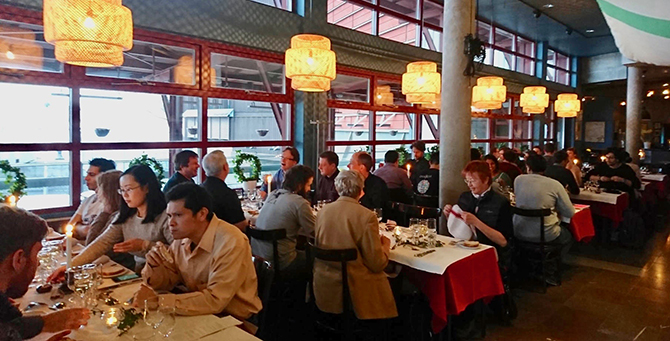
From the talks and the hands-on session, “awesome” John Stone especially entered the hearts of the students with an interactive and engaging demonstration on how to use VMD to do molecular visualizations. Erik Lindahl's presentation on GROMACS was also very favourably remarked on, both scientifically and in terms of presentation, by several of the students. In general, I was very impressed by the dedication, enthusiasm and keen level of interest shown by all of the main speakers who made themselves available throughout the whole of the school (including all of the tutorials, not only their “own” sessions), as well as listening to each other’s talks, and who were always ready to assist the students.

We knew from the beginning that there would be quite a spread in the experience level of the students – basically ranging from total beginners to quite professional users for some of the software – which made it a real challenge for the presenters to find the exactly right level, but everyone I talked to said that the school had been really useful and that they had learned a lot.
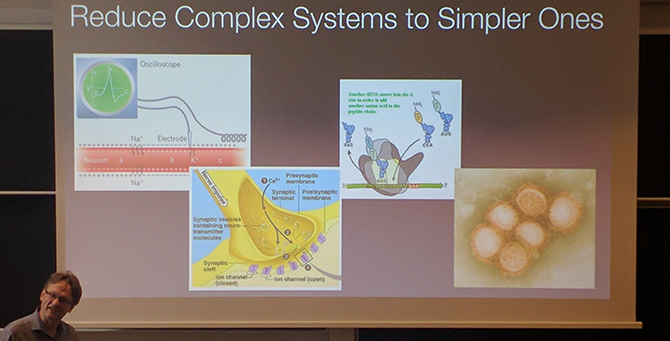
The intensive time that had begun so dramatically finished, at least for me, with a tear in the eye: it was over too soon and I felt we should do something like this again soon; the well-polished program was certainly worth repeating.
For more information on future PRACE training events, please go to www.training.prace-ri.eu , and for more information about BioExcel, please visit their website where you can sign up for their newsletter.
